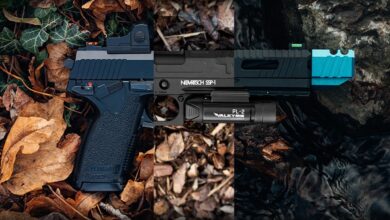How to choose a camera kit for beginners?

Purchase a camera:
Back then, it was easy to purchase a camera. Quick forward over a century after the fact, and current cameras are so different and high level that getting one is most certainly not a one-model-fits-all sort of choice.
The majority of us currently own a wonderful camera as a cell phone, and knowing when a devoted camera gives a genuine advantage over our telephones can be challenging to decide. Costs for new cameras range from two or three hundred to a couple of thousand bucks, with various brands and models at every level en route.
Megapixel of a good Camera:
This guide is intended to get first-time camera purchasers pointed in the correct course. As we’ll reference different sensor measures.

it’s smart to find out more about those first, or look to the megapixel legend area for an explainer on why greater sensors take better pictures.
How would you pick between every one of these packs?
Indeed, first, you should be like Crisscross and go in reverse (with your direction, not your pants). Rather than simply contemplating how you need to manage your camera, attempt to make a stride back and check the master plan out. Definitely, look out — we’re simply beginning on the photography quips.
How Do You Plan to Use Your Images?
Have a go at pondering how you intend to utilize your pictures, as opposed to exactly what you need to take pictures of. Assuming you’re expecting to utilize your pictures exclusively for Instagram you will not be guaranteed to require the quality and goal a DSLR can give you. Of course, you can get speedy and light with a point and shoot, however to catch those monstrous scenes in low light you might need a wide focal point on a camera that can deal with that lift in ISO.
How Do You Plan to Travel?
Climbing the Pacific Crest Trail throughout the span two or three months? You’ll presumably be only dandy with a little, lightweight unit to catch your encounters and make a slideshow for loved ones.
Making a trip to go shoot a wedding?
You should consider raising the stakes with a mirrorless or DSLR.
Need a lovely snap for the Instagram feed of your latte?
A cell phone will do.
What’s Your Budget?
Whenever we talk about financial plans, it tends to be with regard to cash and weight. Pack check charges can include rapidly on lengthy global flights, and the load on your body from hauling around weighty stuff can represent the deciding moment of an outing. Conveying loads of weight could cause you long-haul torment, encroaching on your photography profession. Furthermore,
Who needs a kink in their neck?
Really we don’t. We’ll get into it from there, the sky is the limit with our 4 primary photograph units beneath – Mobile, simple to use, mirrorless, and DSLR. We’ve likewise chatted with specialists in every one of these classes to get their certifiable experience and blended their insight all through this aide.
You’re the master of the frameworks that work for you, yet we’ll give our contemplation sun gear from an attainability sense. We generally shoot (see what we did there?) to fit everything in one knapsack, so we want to bring as little as possible while as yet scraping by.
- Glossary:
- In regard to photography — and particularly photography gear — there are a ton of terms that could seem like rubbish to the typical bystander. While the expert photographic artists of the world don’t hesitate to do this stuff, we needed to require a moment to do some making sense of for the fresher, sprouting picture takers who might be understanding this. To the experts out there — simply feel free to skirt this segment.
- Moving right along, here is some normal dialect that you will hear tossed around in this aide:
- Gap: how much light your focal point allows in + the profundity of the field in your photograph. The lower number (1.8) = shallow profundity of field, gives loads of light access.
- The profundity of Field: The region that is in the center of your picture.
- Computerized Noise: Those small shaded spots that make your picture look lopsided and grainy, are brought about by shooting in low light with a high ISO.
- Central Length: Always estimated in millimeters, the central length estimates how “zoomed in” you are. Low numbers will give you a wide point, big numbers will be faxed.
- F-Stop: F-Stop is one more term for the gap.
- ISO: A proportion of how light touchy your sensor is. A higher ISO will mean a more brilliant picture, but possibly more advanced clamor as well.
- Prime Lens: Only one central length. Lighter and more modest than a long-range focal point.
- Crude: The uncompressed picture, essentially the negative of advanced photography.
- Sensor: The region that catches your picture, the film of advanced photography.
- Screen Speed: How rapidly your camera opens and closes to uncover your sensor or snap the picture. The more it stays open, the more light is allowed in.
- Long-range Lens: Multiple central lengths. Heavier and greater than an excellent focal point, yet greater adaptability.
- Weatherproofing, dust-sealing, and shock-sealing
- Most importantly, how about we clear up some disarray: a camera that is weatherproof, rainproof, or sprinkles resistant isn’t waterproof. A weatherproof camera infers that every one of the creases and fastens has been fixed to keep out downpours, fog, and light sprinkles, however, it will not get by whenever lowered. A waterproof camera, then again, is intended to be taken submerged. Assuming you shoot scenes in the downpour, you need weatherproofing. To take pictures while swimming, you need waterproofing.
- Camera bag : choose the right wedding camera bag
Our Contributors That Made This Guide Possible
Adrienne Tam: Architect and photograph lover.
Corey Tenold: Professional style picture taker.
Frances Beatty: Professional wedding picture taker.
Jared Martin: Professional land picture taker.
Cap Le: Self-educated photographic artist.
Tara Lilly: Professional wedding picture taker.
Assuming you are on a restricted financial plan, say $300 or less, truly ponder whether you want an independent camera by any means. Assuming you get one, ensure you’re going for highlights (long-range focal point, waterproofing, and so forth) that your cell phone doesn’t have, and don’t anticipate huge picture quality increases.
Assuming your financial plan is somewhat higher, yet you need to stay with something basic, consider a high-level minimal camera with a 1-inch-type sensor. Here you can check the best Black Friday camera bargains we found.
Would it be advisable for you to conclude quick reaction and better quality are what you look for, or are keen on photography as a side interest or calling, now is the right time to buy a mirrorless camera or DSLR? Section level models start around $500, yet additional costly choices give more space to develop into. Keep in mind, that everything revolves around observing the camera that is appropriate for you.







